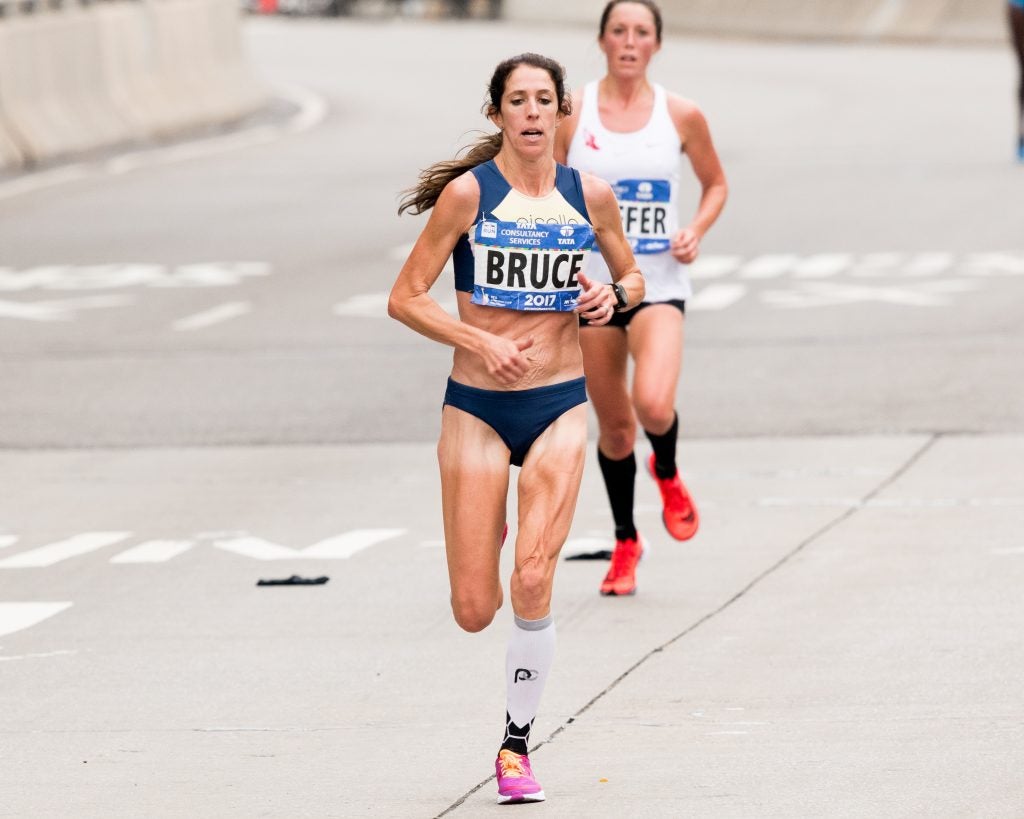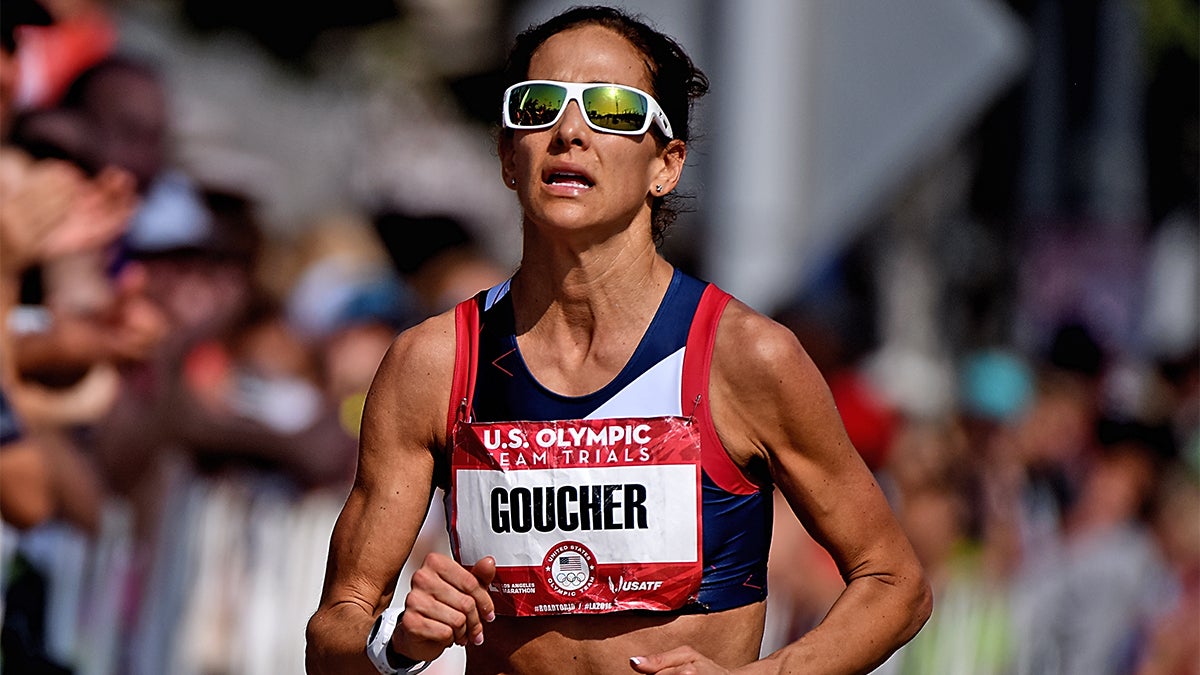Running older, running better: Miles add up to more resilient women

It’s hard to ignore the increasing number of masters age group and post-35-year-old women making waves in running. Some, such as Roberta Groner and Kate Landau, are showing up in the spotlight for the first time in many years. Others, such as Stephanie Bruce, have been mainstays but are producing impressive results in the later stages of their running careers – or in their post-baby running days.

A recent study conducted by Emma Lee, Eric Snyder and C.J. Lundstrom of the University of Minnesota, concluded the results posted by these older women warrant attention. Researchers used peak aerobic power (VO2Peak) and running economy to estimate a VDOT score.
First, a quick explainer. VO2Max, also known as maximal oxygen uptake, is the measurement of the maximum amount of oxygen someone can use during intense exercise. It is usually used to establish the aerobic endurance before or during training.
VO2Peak is the VO2Max attained by an athlete on a particular test, but may or may not be the VO2Max which is attainable by the individual. VO2Peak is a measure that combines cardiovascular and skeletal muscle oxidate function with pulmonary ventilation. According to PLOS One, VO2Peak is one of the best predictors of cardiovascular and overall mortality in adults.
Similarly, VDOT is an athlete’s VO2Max as a standardized measure that accounts for varied circumstances and conditions, such as temperature and race length.

The data from the study indicated the performance results in masters runners showing a higher VDOT score was significantly associated with VO2Peak. A negative correlation existed between VO2Peak and energy cost, a measurement of running economy: less efficient runners were able to reach lower VO2Peak. In addition, converted VDOT scores were significantly associated with the three-year peak weekly training distance, while VO2Peak measured within four weeks prior to the race and maximum weekly distance run in the three years leading up to the event, correlated with race performance. Put simply, in some cases, years of running, experience and consistent training factored into performance results.
Several studies have documented VO2Max progressively declines with age, but lactate threshold (the maximal effort or intensity an athlete can maintain for an extended period of time before lactate levels in the blood inhibit performance) as a percentage of VO2Max, and running economy, were typically less affected. This knowledge may lead us to question what else is at play in helping retain running economy and lactate threshold. The correlation to three-year peak weekly training distance suggests competitive levels of performance in long-distance runners could be connected to miles on the feet.
In older runners, the muscles and body have been hardened to years of work. The body is familiar with the output required to achieve a certain result. This mentally and physiologically comes from practice and experience. A sound coach delivers a training plan that seeks to cultivate this in a runner and changes the plan when this progress no longer occurs and the body, in essence, gets too used to what is happening.
In order for change and progress to continue, the body must be put under stress. Too much stress leads to injury. Not enough stress leads to stagnant running times and a lack of mental stimulus driving the desire to improve. Longtime elite-level coaches Steve Magness and Jon Marcus have explored this concept extensively. In blogs and podcasts, they talked about the need for injury resiliency – a balance between stress and rest in which the body rebuilds from the stress of training and builds resilience against injury during periods of rest. When the balance is correct, runners can keep running, enabling their bodies and minds to adapt and build.
When this happens, athletes are able to re-evaluate their body and its abilities precisely because of their age and experience level. Bruce, for example, set personal-best times in both the half and full marathons in the past year. These results came after she had two children. She has spoken openly about the changes her body underwent, and how she embraced them. She also has spoken about how she and her coach, Ben Rosario of NAZ Elite, worked to craft a training program that allowed her to build mentally and physically, gaining the experience and miles that allowed her to succeed.
Landau may be a prime example of what it takes to perform at a high level in her later years. Finishing as the third American — eighth among women overall — at the 2018 Chicago Marathon, Landau, who is 42, credits balance for her success. She is the first to admit running isn’t her top priority; she prioritizes her daughter and her job. Landau also is no stranger to the concept of running as a journey that may take a long time to come to fruition. While she enjoyed tremendous success as a collegian, she did so while battling an eating disorder. That eating disorder plagued her until April 2011, when overcome with exhaustion and mental health issues, Landau sought help. She resumed her running journey in 2013 and “it has been a gradual improvement.”
With the Olympic trials looming in February, Landau said her age and experience have allowed her to learn how to fit the pieces together successfully. “I have learned that I don't like running in pain, so if something hurts, I don’t run. A few days off doesn’t hurt fitness overall.”
And she said, “the looser skin and wrinkles are annoying, but I know my body can do much more than most other 43-year-old bodies, so I move on and don’t dwell on the wrinkles.”

Landau and her generational peers are in the unique position of laying down the foundation for older professional runners: They are the first group of elite and pro runners that scientists, physicians and clinicians have been able to follow throughout their careers.
David Willey, former editor of Runner’s World, noted this full-career tracking is partly due to Title IX, which was passed into law in 1972, giving female athletes equal opportunity to perform and excel. The effects of that legislation on running have been felt since the 1990s, and part of that he noted, coincided with advances in training, nutrition, injury resiliency and understanding of an athlete’s mental approach. Furthermore, he observed, female athletes may be able to push themselves into new realms with higher pain tolerance and greater mental stamina than men, and, combined with improved training methods, women could “smash through ceilings more often.”
Willey also noted this increased later-career focus came at a time in which media is paying more attention to such successes, coverage of female sports has improved overall and unprecedented support is available on social media networks: Women push each other every day on Instagram, Twitter and Facebook. Multifaceted layers are inherent in this rising success, concludes Willey: Some of it talent, some of it science, and some of it simply years of hard work and grinding.
If this era offers the first chance to watch the journey of the elite and talented runner class, can non-elite runners learn from their journey, learn how to observe their own journey without being overly critical, and learn how to tackle the fear of the day when the body can no longer perform?
Kara Goucher does this by acceptance. After nearly 20 years as a professional runner in track and field and the marathon, including representing the United States in two Summer Olympics, Goucher, at age 41, knows competition on that elite level is no longer in the cards. In a recent podcast interview with Nicole DeBoom, she talked about her foray into trail marathons and how she embraced this new stage of her life by accepting where she is and what her body can handle. And continuing to do the work, mostly because she is doing something she loves.
The Minnesota study’s results were not limited to elite runners: The idea that consistent work and committed training can yield results applies to everyday runners as well. While elite runners have the resources and support to make the performance improvements happen more easily, the study’s results underscore that every day counts: To get better and continue longer past the age of 40, the best thing to do is just keep running.
Laura Peill, a Canadian living in Australia, is an avid long-distance runner, nutritionist and Pilates instructor, who spends her time teaching and writing about movement. She uses these modalities to help individuals shift their mindset around health, and overcome hurdles holding them back from their own success.
Editor’s note: For the coming 2019-2020 academic year, the Global Sport Institute’s research theme will be “Sport and the body.” The Institute will conduct and fund research and host events that will explore a myriad of topics related to the body.
Related Articles
Running club helps those seeking sanctuary find community
Navajo ultra distance runner honors the Long Walk by retracing history step by step
‘Forrest Stump’s’ 1,500 miles a small step to advocate for better athletic prothesis access

